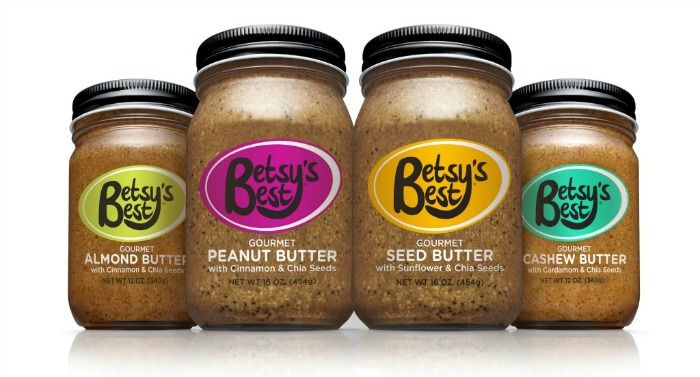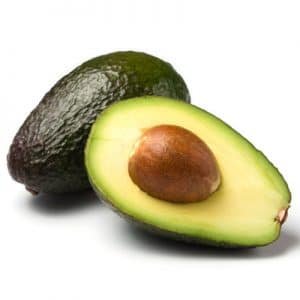In this article
When we get busy, many of us shelve our healthy habits.
Who has time? Between school, work, responsibilities, and life itself, it can be a challenge to give a lot of attention to meeting our dietary needs.
Solution: Green smoothies!
They’re a great way to fill in the nutritional gaps. With a little protein and fat in the mix, they can be an energizing start to your morning or a satisfying on-the-go snack.
Even though somewhere along the way you’ve likely heard about the benefits of drinking smoothies, maybe you’ve wondered exactly how to make a kale smoothie.
Don’t worry, we’ve got you covered.
And you don’t even need a recipe to enjoy refreshing and healthy smoothies; you can pick ingredients based on the season, your mood, or whatever you have in the fridge.
How to Make a Smoothie Without Yogurt
The most important part in perfecting your smoothie is getting the balance right – which can be kind of tricky.
Too many greens and you might feel like you took a mouthful of grass, especially if you’re new to green smoothies. Too much fruit will pack on sugar and add unnecessary calories.
Once you get the proportion right, you can take your smoothie to the next level by adding healthy fats, proteins, and a superfood boost.
Here are some tasty tips and tricks for how to make a dairy-free green smoothie that’s delicious and healthy.
Mastering the Green Smoothie
Make Most of Your Smoothie Green
While green smoothies are a great way to add a nutritious boost to your day, the calories can stack up fast if you’re not careful.
Fill about 70 percent of your smoothie with vegetables to keep it low in calories and high in fiber. Enjoy the sweet stuff, like fruit, in moderation by limiting it to about 30 percent of your smoothie.
Work your way up to adding even more greens if you really want to optimize the nutritional benefits of your smoothie.
Following this simple ratio prevents spikes in blood sugar and keeps levels steady thanks to the slow-digesting fiber from the veggies.
Add Texture
If you’re questioning how to make a smoothie without yogurt, it easier than you’d think.
Many recipes call for a dollop of Greek yogurt or even ice cream, but it’s totally possible to achieve a creamy texture without the dairy. A few simple swaps:
- Bananas are a popular dairy-free ingredient for putting the “smooth” in “smoothie.” Plus you get the added benefit of their vitamins, minerals, and fiber content.
- Avocados are loaded with heart-healthy fats and they can transform your smoothie into a creamy treat.
- Oatmeal adds fiber and texture to keep you feeling full.
- Chia seeds, soaked in water for at least 10 minutes, can take your smoothie to the next level while adding protein, omega-3 fatty acids, and fiber.
Mix It Up
Variety is key for getting the most out of your smoothies.
Each component has a distinct nutrition profile with different vitamins, minerals, and antioxidants.
Rotate your ingredients throughout the week to take advantage of their unique health benefits.
Use Frozen Fruit Instead of Ice
Next time you have some fruit that’s a little too ripe, consider freezing it instead of tossing it.
Frozen fruit is perfect for giving smoothies a slushy texture and avoids that watered down effect you get from adding ice cubes.
Add Flavor Without Sugar
Fruit is a crucial green smoothie element because the natural sugars help offset the bitterness from the leafy greens.
Spices are another great way to add a tasty twist without adding sugar.
- Cinnamon adds richness while boosting energy.
- Nutmeg is full of flavor and antioxidants.
- Turmeric, known for its anti-inflammatory properties, can bring warmth to any drink.
Seasoning your smoothie is the perfect opportunity to experiment, so break out the spice rack and get creative!
Swap Out the Banana

As I’ve already mentioned, bananas add sweetness and creaminess, so it’s no wonder they’re often considered a smoothie staple.
But if you want to mix it up, try replacing bananas with mangos, papayas, pears, or even unsweetened applesauce for a sweet smoothie sans the banana.
Bonus: a few cubes of frozen unsweetened almond milk (which you can freeze yourself in an ice cube tray) do wonders in replicating that buttery banana texture!
How to Make a Kale Smoothie
Dark, leafy greens should be the foundation of any smoothie. These veggies are rich in antioxidants and can really pack a nutritious punch.
Let’s look at a few delicious options to help get you started.
Kale

And kale is an awesome choice: this super green is bursting with vitamins K and E, calcium, iron, and folate, making it a healthy addition to any smoothie.
Here’s the thing: kale is typically an acquired taste. It’s often described as bitter, so it’s best when mixed with sweet fruits like mango.
If you’re a kale newbie, ease into it by using curly kale, a more mild and slightly sweeter variety.
Spinach
Spinach is very nutrient-dense, loaded with B vitamins, phosphorus, potassium, and fiber.
It has a very mild flavor profile, so it’s an ideal ingredient for a green smoothie.
Since it has a very neutral taste, you can add just about anything to it. Opt for fruits lower in sugar, like strawberries, blackberries, or peaches.
Swiss Chard

Some compare the taste of Swiss chard to spinach or beet greens with less of an earthy, bitter taste than kale.
Sweet fruits like pineapple or banana are excellent additions to a Swiss chard smoothie.
Beet Greens
Next time you cook beets, make sure you save the tops to add a healthy boost to your next green smoothie.
Incredibly rich in nutrients, beet greens are a very good source of iron, calcium, and magnesium.
Because of their very mild taste, the flavor can be easily masked by low-sugar fruits, like blackberries or oranges.
Romaine
This type of lettuce, also known as Cos lettuce, isn’t just for salads. Full of manganese, copper, and vitamin C, romaine is perfect for taking a green smoothie to the next level.
It has a light and refreshing flavor and goes well with just about any fruit. Combine romaine with apples and cinnamon for an invigorating and tasty treat.
Pump up the Protein
Proteins are the building blocks of our body. Everything, right down to the cellular level, depends on protein to function and thrive.
Although it can be tempting to turn to powders and mixes to quickly bump up protein content – and that’s okay, smoothies are also an awesome way to squeeze in some extra protein while taking advantage of the multitude of nutrients found only in real foods.
Here are a few ideas for how to make a healthy smoothie with protein:
Nut Butter
Almond butter, peanut butter, and cashew butter are all excellent ways to add protein while also adding healthy fats and flavor.
Opt for natural nut butters when possible and always look for those with the fewest ingredients.
Flaxseed
A tablespoon or two of flaxseed adds protein, fiber, and heart-healthy fats.
Make sure you grind it before adding it to your smoothie; the ground version is more readily absorbed by the body and easier to digest.
Quinoa
This tiny but powerful grain contains eight grams of protein in every cup! Plus, quinoa is considered a complete protein, which means it contains all nine amino acids.
Northern Beans
It might sound strange, but a scoop of Northern beans can upgrade your smoothie by upping the protein and fiber while adding a delectable creamy texture.
Go for the unsalted variety and rinse before adding to your smoothie to mask the flavor and keep sodium low.
Oats
Oats are a great source of protein and fiber and promote lower blood pressure and cholesterol levels.
You can add oats directly to the smoothie if you don’t mind a slightly gritty texture, grind them up before adding for more consistency, or cook them first for a smooth finish.
Fill up on (Healthy) Fats
While it may seem counterintuitive, adding fat to your smoothie is one of the healthiest things you can do for your heart, your brain, and your waistline.
Fats digest much slower than both carbohydrates and protein, so they help keep you feeling full and satiated for longer.
They have also been shown to have a positive effect on cholesterol levels as well as cognitive function.
Let’s look at a few healthy ways to add fat to your next green smoothie:
Walnuts
This nut is high in omega 3 fatty acids, which means it packs in a healthy dose of heart-healthy unsaturated fats as well as protein and antioxidants.
Make sure they’re unsalted and keep your portions in check by limiting it to less than an ounce per serving.
Avocados
Avocados not only create an irresistibly creamy consistency for your smoothie, they are an excellent source of good fats to reduce the risk of cardiovascular disease.
They also are bursting with vitamins and minerals.
Believe it or not, they actually contain more potassium than a banana.
Pistachios
The green nut is nutrient-dense, delicious, and makes a great addition to any smoothie.
Like all nuts, pistachios are rich in healthy fats to keep you feeling satisfied. They stand out among other types of nuts, though, because they have the highest amount of vitamin K, phytosterols, and potassium.
Coconut
We hear so much about coconut these days for good reason. It’s full of healthy fats.
Add a scoop of coconut oil, a splash of coconut milk, or raw coconut itself to reap its nutritious benefits.
Supplement with Superfoods
Spirulina is a blue-green algae is commonly classified as a superfood due to its myriad of health benefits.
With a higher concentration of protein by weight than red meat, it’s also a complete protein and is loaded with B vitamins, vitamin K, essential fatty acids, and minerals.
Goji berries have been heralded for their many health benefits.
They have been used for centuries to fight disease and treat conditions like diabetes and high blood pressure. Brimming with antioxidants, amino acids, and vitamin C, these tiny berries have a seriously impressive nutrition profile.
Cacao powder contains a myriad of antioxidants and phytochemical. A teaspoon of cacao powder or nibs in your smoothie will add numerous nutritious benefits and a hint of a rich dark chocolate taste.
Maca root belongs to the same family as broccoli and cabbage.
Packed with essential amino acids, vitamins, and fatty acids, it has been known to bump up energy and balance hormone levels. Maca root is most commonly found in powder form, perfect for giving your smoothie an upgrade.
How to Make a Healthy Smoothie
Seriously: once you know the formula and have practiced it for a while, smoothies are pretty hard to mess up.
Always fill up with greens first and keep it balanced with a good source of protein and fat.
Otherwise, take the opportunity to get creative and add your own twist to your creations.
With the guidelines listed here, you’ll be a smoothie master in no time.
Want a Printable Smoothie Guide?
If you’d like to have an easy-to-reference chart for making your own smoothie recipes, you’ll want to download our 1-page printable Perfect Green Smoothies guide.
In a simple at-a-glance blueprint, you’ll see how much of which ingredients you can mix-and-match to create amazing smoothies.
You can download it right now – for FREE! – by clicking the banner below.







